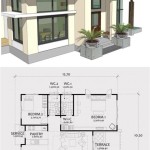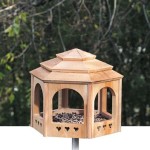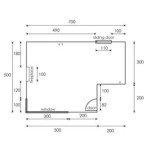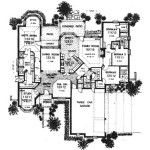One Bedroom Flat Plan With Dimensions: A Comprehensive Guide
Understanding one-bedroom flat plans, complete with dimensions, is crucial for various individuals, including prospective buyers, renters, interior designers, and architects. A detailed plan provides a visual representation of the space, allowing for effective planning and utilization. This article explores the essential elements of a one-bedroom flat plan, the significance of dimensions, and how they contribute to informed decision-making regarding layout, furniture placement, and overall functionality.
A one-bedroom flat typically encompasses a bedroom, a living area (often combined with a dining space), a kitchen, and a bathroom. The arrangement and size of these spaces can vary significantly depending on the overall square footage of the flat and the design preferences of the architect or developer. Understanding the dimensions of each room, as well as the overall footprint of the flat, is key to assessing its suitability for individual needs and lifestyle.
Dimensions are typically provided in either metric (meters and centimeters) or imperial (feet and inches) units, and are clearly marked on the plan. These measurements provide a precise indication of the length, width, and height of each room, as well as the placement of doors, windows, and fixtures. In addition to individual room dimensions, the plan should include the overall dimensions of the flat, which is essential for understanding its position within a building and its relationship to surrounding structures.
Key Point 1: Understanding the Importance of Room Dimensions
Room dimensions are paramount in determining the usability and functionality of each space within the flat. Consider the bedroom: knowing its dimensions is essential for determining the appropriate size bed, bedside tables, and wardrobe to accommodate. A rectangular space that is 12 feet by 10 feet (approximately 3.6 meters by 3 meters) will comfortably fit a queen-sized bed with space for side tables, while a smaller room may only accommodate a double or even a single bed. The height of the ceiling should also be noted, as lower ceilings can make a room feel smaller and limit storage options.
Similarly, the dimensions of the living area are critical for planning the seating arrangement, television placement, and overall aesthetics. A larger living room allows for more flexible furniture arrangements, potentially accommodating a sectional sofa, armchairs, and a coffee table. A smaller living room might necessitate a more minimalist approach, with smaller seating options and multi-functional furniture. A floor plan with well-defined dimensions enables accurate space planning and avoids the frustration of purchasing furniture that does not fit.
The kitchen is another area where precise dimensions are crucial. The layout of cabinets, countertops, and appliances needs to be carefully planned to maximize efficiency and usability. The position of plumbing and electrical outlets, indicated on the plan, also influence the placement of these elements. A kitchen plan with dimensions allows for accurate estimation of storage capacity and work surface area, which is particularly important for those who enjoy cooking.
Bathroom dimensions are equally important, especially in smaller flats. Knowing the size of the bathroom allows for the selection of appropriate fixtures, such as a shower or bathtub, a toilet, and a sink. The placement of these fixtures needs to be considered carefully to ensure adequate space for movement and use. Accessibility requirements should also be factored in, if needed, which may necessitate a larger bathroom with specific fixture placements.
Beyond the individual rooms, the dimensions of hallways, entryways, and storage spaces play a role in the overall livability of the flat. Wide hallways make it easier to move furniture and navigate the space, while adequate storage space is essential for keeping the flat organized and clutter-free. The floor plan should provide clear dimensions for these areas as well, allowing for informed decisions about storage solutions and furniture placement.
Key Point 2: Deciphering Symbols and Annotations on the Plan
A one-bedroom flat plan is typically comprised of a series of lines, symbols, and annotations that represent various elements of the flat. A solid, thick line usually represents a wall, while a thinner line may indicate a partition or a half-wall. Doors are typically represented by an arc indicating the direction of the door swing, and windows are often depicted as parallel lines within the wall. Understanding these symbols is key to interpreting the plan accurately.
Annotations on the plan provide additional information about the dimensions, materials, and finishes used in the flat. Dimensions are typically marked with arrows indicating the length of a wall or room, and are often specified in both metric and imperial units. Notes may also be included to indicate the type of flooring, wall finish, or fixture used in a particular area. These annotations are essential for understanding the overall design intent and the materials used in the construction of the flat.
In addition to dimensions and annotations, the plan may also include symbols representing electrical outlets, light switches, and plumbing fixtures. These symbols indicate the location of these essential services and are important for planning the placement of furniture and appliances. The plan may also indicate the location of heating, ventilation, and air conditioning (HVAC) systems, which can influence the layout and design of the flat.
Furthermore, understanding the orientation of the plan is vital. A north arrow is typically included to indicate the direction of north, which helps to determine the amount of sunlight each room will receive throughout the day. Rooms facing south will generally receive more sunlight, while those facing north may be cooler and require more artificial lighting. This information is particularly important for those who prefer to maximize natural light or are sensitive to heat.
Beyond standard conventions, some plans may include specific symbols or notations unique to a particular project. A legend or key is usually provided to explain the meaning of these non-standard symbols. Reviewing this legend carefully is essential for fully understanding the plan and avoiding misinterpretations.
Key Point 3: Utilizing Dimensions for Furniture Planning and Interior Design
Once the dimensions of the one-bedroom flat are understood, the next step is to utilize this information for furniture planning and interior design. This process involves creating a layout that is both functional and aesthetically pleasing, maximizing the available space and creating a comfortable living environment. The dimensions provide a foundation for accurate furniture selection and placement.
Before purchasing any furniture, it is essential to measure the dimensions of each piece and compare them to the dimensions of the rooms in the flat. This helps to avoid the frustration of buying furniture that is too large or too small for the space. Online tools and software applications can assist in creating virtual layouts, allowing for experimentation with different furniture arrangements and visualizing the final result.
Consider the scale of the furniture in relation to the size of the rooms. In a small flat, oversized furniture can make the space feel cramped and cluttered. Opting for smaller-scale furniture and multi-functional pieces can maximize the available space and create a more open and airy feel. Conversely, in a larger flat, smaller furniture pieces can get lost and may not provide adequate seating or storage.
The placement of furniture should also be considered carefully. Leaving ample space for movement is crucial for creating a comfortable and functional living environment. Avoid blocking doorways or windows, and ensure that there is enough space to walk around furniture without bumping into it. Traffic flow is also an important consideration, particularly in smaller flats.
In addition to furniture placement, the dimensions can also inform decisions about lighting, window treatments, and wall décor. Understanding the amount of natural light each room receives can help in selecting appropriate window treatments and lighting fixtures. The dimensions of the walls can be used to determine the optimal size and placement of artwork and mirrors. Careful consideration of these elements can enhance the overall aesthetics of the flat and create a cohesive and inviting living space.
Furthermore, consider the use of vertical space. In smaller flats, maximizing vertical storage can be an effective way to create more space. Tall bookshelves, wall-mounted cabinets, and overhead storage can provide additional storage without taking up valuable floor space. Utilizing the full height of the walls can also make the room feel larger and more open.
Finally, do not underestimate the impact of color and texture on the overall feel of the flat. Light colors can make a room feel larger and brighter, while darker colors can create a more intimate and cozy atmosphere. Using a consistent color palette throughout the flat can create a sense of cohesion and unity. Incorporating different textures can add visual interest and depth to the space.
In conclusion, a thorough understanding of a one-bedroom flat plan with dimensions is essential for making informed decisions regarding layout, furniture placement, and overall design. By carefully analyzing the dimensions, deciphering the symbols and annotations, and utilizing this information for furniture planning and interior design, individuals can create a functional and aesthetically pleasing living environment that meets their specific needs and preferences.

Small Apartment Plans 1 Bedroom 2 Bathrooms Living Room
.jpg?strip=all)
Hearth Hollow What To Know About 1 Bedroom Apartment Floor Plans
Apartment Layouts Midland Mi Official Website

1 Bedroom Adu Floor Plans Designs Layouts Exteriors

One Bedroom Apartment Home Style 1a Ada Vantage On The Park

Ranch Style House Plan 1 Beds Baths 896 Sq Ft 771

Floor Plan 1d Atelier Third Ward

Cozy 1 Bedroom Bath Floor Plan House 750 Sq Ft The Woodland Cottage Model 00005

Beautiful 1 Bedroom Bungalow Floor Plan Sample
.png?strip=all)
Hearth Hollow What To Know About 1 Bedroom Apartment Floor Plans
Related Posts








